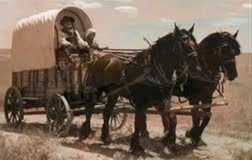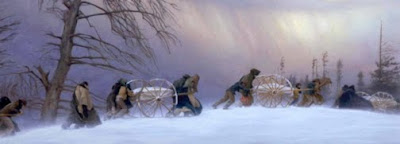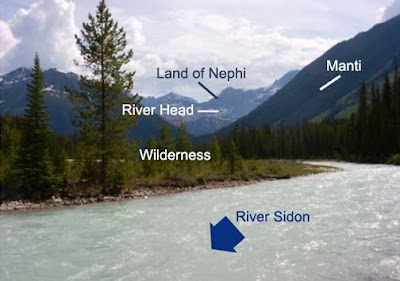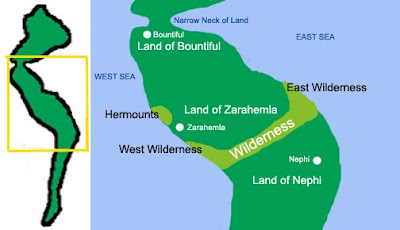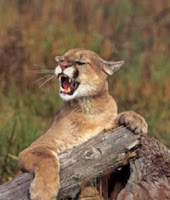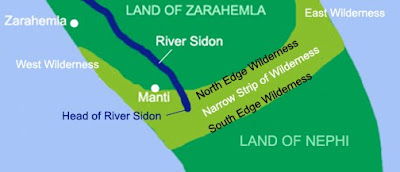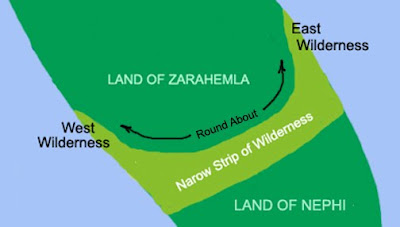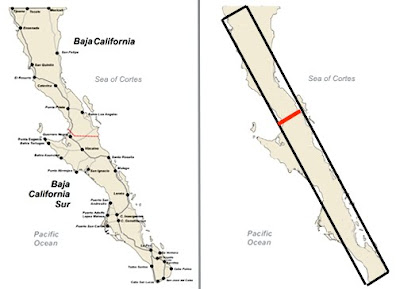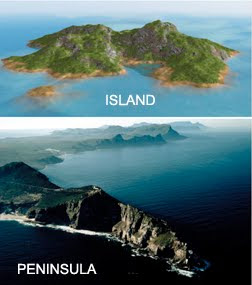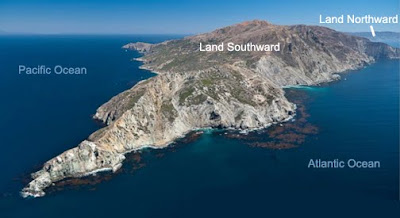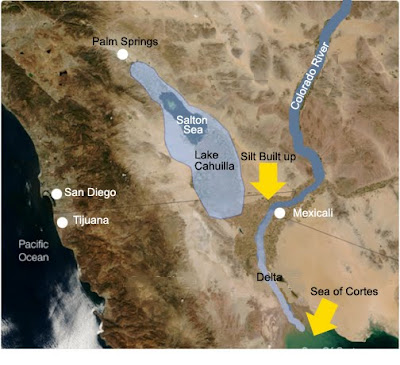“The third is the basic and pivotal location of the river Sidon. This river is a key feature of the Nephite realm in the Book of Alma, and is the only river mentioned by name in the Book of Mormon account. Several locations are described in relationship to the river Sidon. For example, the oft-mentioned and seemingly unique feature called the head of river Sidon, as well as the city and land of Zarahemla, the hill Amnihu and the hill Riplah. If the river Sidon and the head of the river Sidon can not be located precisely and confidently, and with convincing evidence, then it significantly weakens any geographical proposal.”
In the six earlier posts entitled: “The Baja Theory—Does the River Sidon Flow North or South?” the direction of flow was shown to be from the south to the north, from the south wilderness strip where the head of the river Sidon was located (near the land of Manti) and that it flowed northward past the city of Zarahemla as the scriptural record indicates.
There seems little need here to debate further this simply stated feature. And contrary to Rosenvall’s belief, the record does state clearly where the head of the river was located and that it did flow northward, not southward as his model requires.
Rosenvall further writes: “We would suggest this as the key evidence: In our proposal all possible geographical features and descriptions appear to match the proposed area 100 percent. This border to border and top to bottom alignment of features seems to us as far more significant than any single evidence or set of evidences.”
Unfortunately, very few features of the Baja peninsula match any part of the record of the topography and geography of the Book of Mormon. Simply saying it does, is not sufficient. Actually scripture needs to be cited correctly and followed through.
Quoting Rosenvall: “The first is the implication of the Lord’s words to both the Jaredites and the Nephites that they had been sent to lands which were “choice above all other lands of the earth.” This direct and unambiguous statement, by its very superlativeness, would exclude most locations on the earth and include only a few.” Obviously, Baja California simply does not fit the requirements. Of all the land in the Western Hemisphere, few places could be less desirable and choice than Baja California if you exclude the coastal beaches. Inland, Baja and Baja Sur are about as inhospitable area for settlement, let alone choice lands, as anywhere that can be found outside the near arctic reaches of northern Canada and Tierra del Fuego in Chile, or the deserts of the southwest.
 Left Map: Early Spanish Missions; Right Map: Today’s Major Cities.
Left Map: Early Spanish Missions; Right Map: Today’s Major Cities.Of the 28 missions established by the Catholic Church in early Baja and Baja Sur, 19 were along coastal areas, with only 9 inland, and 6 of those in the southern part of the peninsula where water was more available because of the rainy seasons. The other three inland missions were in the Mediterranean inland of the north. Even today, of the 13 most populated city areas, 11 are on the coast. Only Mexicali, along the U.S. border and San Ignacio, are inland. Within these 13 cities are 95% of the peninsula’s total population.
Lastly, it might be said, that all artifacts of earlier life on the peninsula date to a very backward people who left behind nothing of note other than rock wall paintings (which date to 500 A.D. about the same time as the Mayan ruins at Copan), no buildings, ruins of any kind, forts, palaces, temples, or other kinds of settlement. From the B.C. period come artifacts of basalt choppers and scrapers, obsidian projectile points, and sandstone manos and metates, bone awls and deep scapula “saws.”
Thus, from the last three posts, we can see that Rosenvall’s claim that Baja California matches the scriptural requirement of the Land of Promise in the Book of Mormon is without merit.

